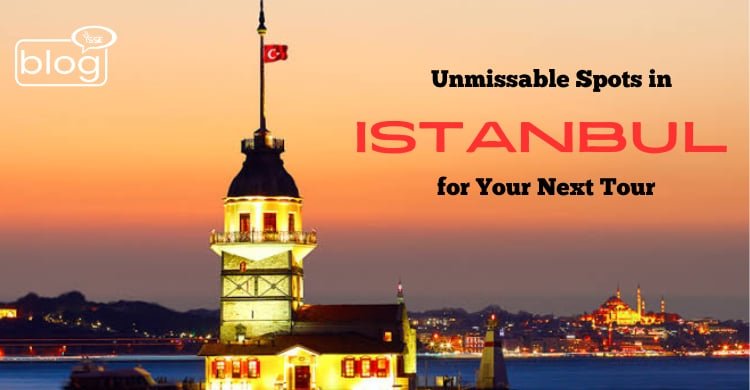Istanbul is a unique city where Europe and Asia intertwine, with a touch of history, architecture, and other extras. For many tourists, great places to visit are those that are unbeatable for everyone who visits the city. Everywhere that will be visited, including the historical mosques, bazaars, or scenic views, Istanbul guarantees an amazing tour no matter what. Below is a guide to its attractions that should not be missed.
Hagia Sophia
Hagia Sophia, which is situated in Istanbul, is an example of medieval architecture built as the cathedral of the Byzantine Empire in 537. It was converted into a mosque in 1453 and is now a museum. Famous for its enormous dome, beautiful mosaics, and the features of both Christian and Islamic architecture, it is a true symbol of Turkey.
Turkish Blue Mosque
Turkish Blue Mosque, also known as Sultan Ahmed Mosque in Istanbul, was built between 1609 and 1616; it is a good example of Ottoman architecture. Prominent for having six minarets and a blue dome, it is still a working mosque; this is one of the most photographed symbols of Istanbul, and it is visited by tourists from all over the globe.
Topkapi Palace
The palace of Topkapi in Istanbul was the official residence of the Ottoman Sultans between the 15th and 19th centuries. It symbolizes oriental architecture secrets and masterpieces; it comprises magnificent courtyards, magnificent structures, and enormous collections of relics revered by Buddhists. It is now a museum where people can get an idea of what life was like in the Ottoman Empire.
Grand Bazaar
Istanbul itself holds the famed Grand Bazaar, arguably the largest and oldest covered bazaar on planet Earth, which is over 450 years old. With over 4,000 shops located on 61 streets, it has a colorful scheme of attracting textiles, spices, jewelry, and antique products. It is a commercial center and an experience of a culture.
Süleymaniye Mosque
The Süleymaniye Mosque was built between 1550 and 1557; the architect of this magnificent building was Sinan. Sited on the Third Hill of the city, it has a large dome, attractive courtyards, and exquisite inscriptions. Imposing examples of Ottoman architecture, from which one can enjoy marvelous vistas of this city.
Dolmabahçe Palace
Dolmabahçe Palace was constructed in the mid-nineteenth century on the Bosphorus; it was the administrative capital of the Ottoman Empire. They loved the European-style architecture, and this palace even had grand interiors with crystal chandeliers and a grand staircase. It also served as the home in the last years of Mustafa Kemal Atatürk, the founder of modern Turkey.
Basilica Cistern
The Basilica Cistern is a Byzantine basilica, an underground water cistern in Istanbul, which was constructed during the 6th century. Standing on 336 marble columns, it is quite dark and gives an eerie feeling. Famous for its Medusa-head-like column bases, the cistern provides a great insight into the engineering and architectural skills of the Byzantines.
Kariye Museum
It is one of the great Byzantine treasures of Istanbul, with 14th-century mosaics and frescoes. The highlighted images are detailed pieces that illustrate scenes from the Bible. Although it is quite small, the church is an exquisite example of Byzantine art, and historians can learn much about the religious practices of the day from it.
Archaeological Museum
One of the most significant museums in Turkey, the Istanbul Archaeological Museum contains a huge variety of artifacts concerning ancient cultures. This museum covers the Greek, Roman, and Ottoman periods, and it provides a historical tour through sculptures, inscriptions, and relics of the archaeological wealth of Turkey.
Galata Tower
The Galata Tower was constructed in the mid-14th century by the Genoese. It is a 66-meter-high structure that provides stunning views of the city, the Bosphorus, and the Golden Horn. What was a watchtower has recently been turned into a kind of souvenir shop where tourists can admire the magnificent views.
To read more blogs, click here.
Writer
Ferdous Ara Rimi
Intern, Content Writing Department
YSSE

